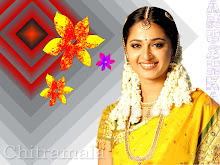

URDHVA KUKKUTASANA
Urdhava means upwards. Kukkuta means a cock. In this posture the body resembles a strutting cock, hence the name.
Techinque
1. After securing steadiness, move into Padmasana by placing the right foot at the root of the left thigh and the left foot at the root of the right thigh, then with an exhalation bend the legs and rest them on the back of the upper arms as near the armpits as possible. Secure this position and balance with even breathing.
2. Exhale, press the palms firmly on the ground, pull the trunk up and raise the head off the floor followeing the stages of the movement as in photo ii. Stretch and straighten the arm and lift up the buttocks. Extend the neck and keep the head as high as possible.
3. Balance in this position on the hands for a few seconds by tightening the muscles in the region of the diaphragm. Try to breathe normally.
4. Exhale, bend the elbow, lower the head to the floor and return to Salamba Sirsasana by releasing the foot lock of Padmasana.
5. Again perform Padmasana. This time placing the left foot first at the root of the right thigh and the right foot at the root of the left thigh. Then repeat the asana as stated above.
6. After staying for the same length of time on both the sides, go back to Salamba Sirsasana , lower the legs to the floor and relax. Advanced
EFFECTS:
This pose strengthens the arms. By continued pactice the lateral mucscles of lthe adomen will develop and the intestines will grow stronger. The spine is stretched full and the effect of Paschinmottanasa is gained in a very short time. The arms and the abdominal organs will grow strong.
All these intricate and difficult positions bring results quicker than the simple ones. When the body becomnes more plaiable, the simple poses will have little or no effect. The wise therefore discard them and practise the intricate poses just as a scholar will not repeat the alphabet daily. But, just as dancers daily pactise some basic steps and do not discard them, so also pupils of uyoga should continue daily to perform Sirsasana and Saravangasana with their cycles.

No comments:
Post a Comment